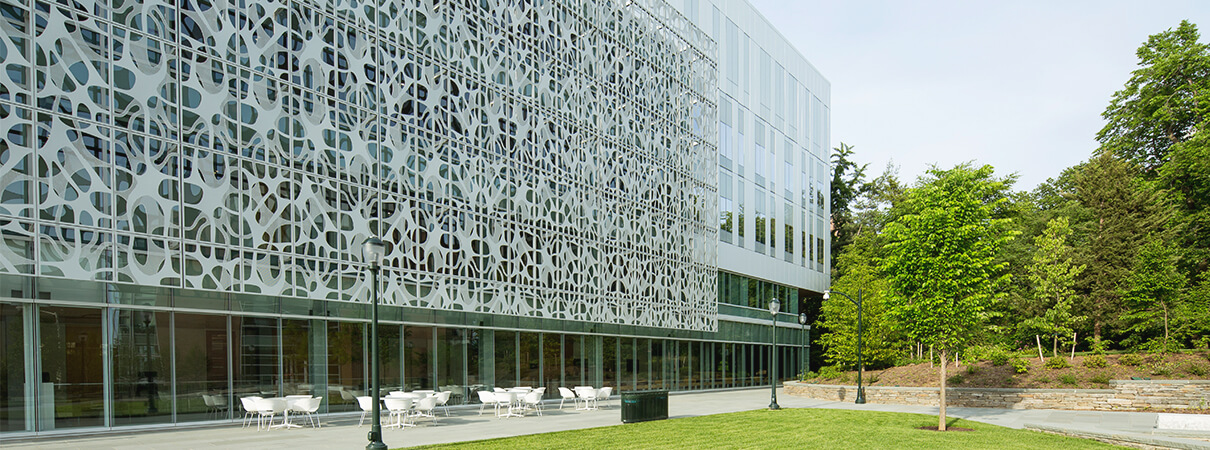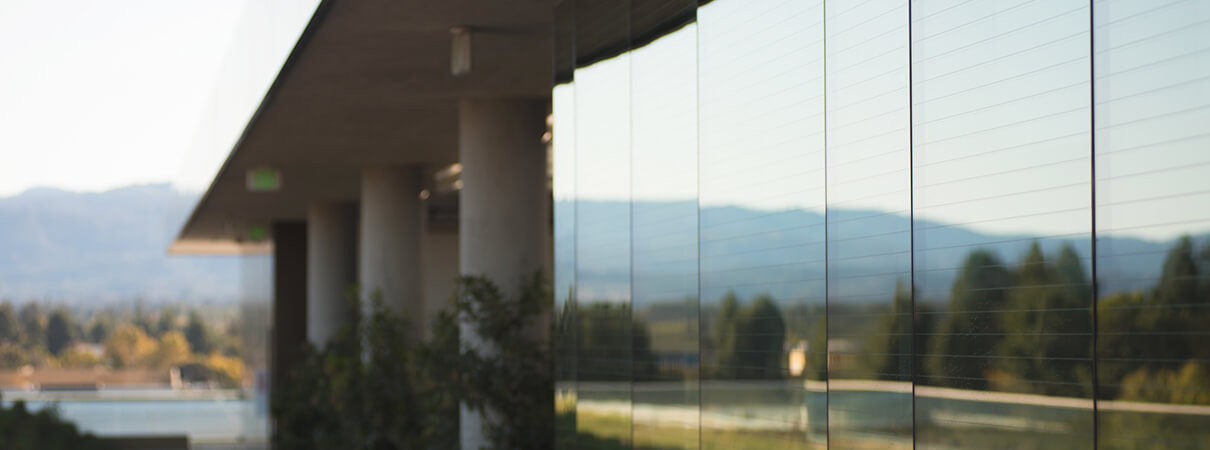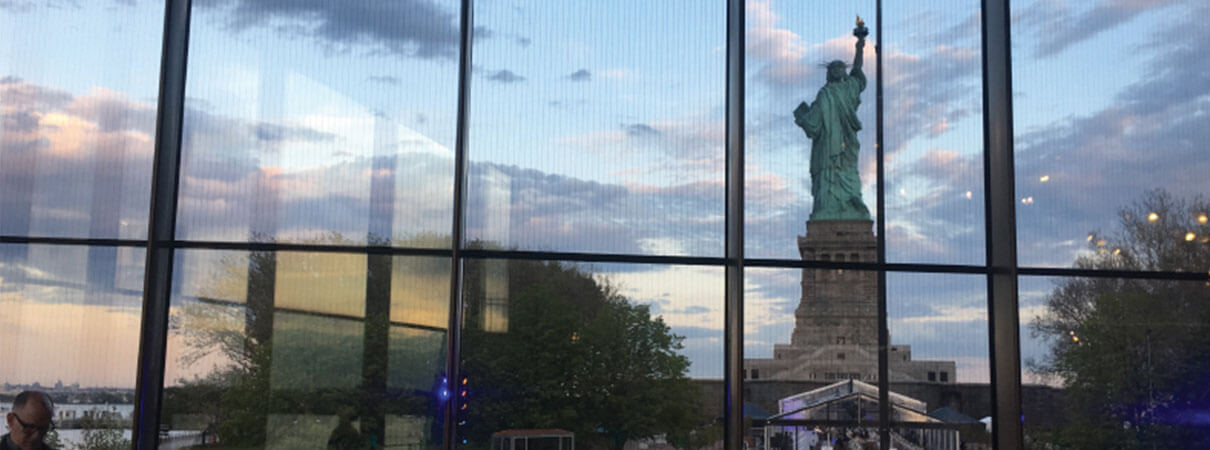Bird-Friendly Building Design: Coming to a City Near You!
Glass collisions kill up to 1 billion birds in the United States each year. Both common and rare species are at risk. Recently, there's been some promising momentum toward addressing this danger, as some cities and states have formalized bird-friendly strategies.
A number of cities, for example, passed local ordinances to use bird-friendly glass and lighting practices that reduce the risk of bird collisions. The bird-friendly building design LEED credit (SSpc 55), which ABC and other partner groups helped to draft and elevate among the architectural community, serves as a good starting point for these local ordinances.

Bird-friendly sunshade on the Levin Neuroscience Building on the University of Pennsylvania campus. Photo by Gregory Benson.
San Francisco was the first major U.S. city to take such initiative, adopting its “Standards for Bird-Safe Buildings” in 2011. Oakland, California, followed suit starting in 2013, requiring that buildings adjacent to parks, bodies of water, and other green spaces incorporate similar elements for building design. Other California cities, including Sunnyvale (2014), San Jose (2015), and most recently Alameda (2018) and Santa Cruz (2019), have incorporated bird-friendly elements in their local planning codes. These aim to reduce bird collisions by cutting back on glass use and addressing glass reflections and see-through conditions that make glass appear to be habitat. In some cases, another goal is reducing light pollution. Other major initiatives are in the works in Chicago, Washington, D.C., and New York City.
Statewide bird-friendly building legislation efforts are gaining momentum in New York, and could be poised for passage in Maryland. Minnesota passed statewide legislation in 2013 that mirrors the LEED credit.
At the federal level, ABC has championed H.R. 919, the Federal Bird-Safe Buildings Act, which has been introduced in the U.S. House of Representatives and continues to gain bipartisan support to enact bird-friendly building guidelines for federal buildings.

Fritted glass used at the Intuit Headquarters in Mountainview, California. Photo courtesy of Intuit, Inc.
These conservation advances — and others like them — are the result of tireless work by birders, activists, architects, and local officials. This, in turn, spurred glass companies to produce more bird-friendly products, as demand has grown.
The bird-friendly advances mentioned above primarily apply to new and significantly renovated high-rise or commercial buildings, leaving individual residents to reduce bird collision risks at houses and low-rise apartments. Fortunately, there are easy, cost-effective solutions. ABC also encourages communities across the country to join us in advocating for collision solutions in their hometowns.
New Statue of Liberty Visitor Center Welcomes Birds as Well

View from the interior of the new Statue of Liberty Museum, showing the fritted dot pattern on the glass that helps prevent bird collisions. Photo courtesy of FXCollaborative.
The new, bird-friendly Statue of Liberty Museum, designed by New York City-based architecture firm FXCollaborative, opened in May of 2019. Most of the glass on the building has a fritted dot pattern, which is practically invisible to human visitors, yet is already proving effective at preventing bird collisions. None have been reported since the glass was installed in the summer of 2018.
ABC's Bird Collisions campaign is made possible in part through the generous support of the Leon Levy Foundation and David Walsh.
Learn more about ABC's Glass Collisions program.


















































